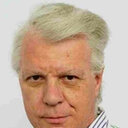Controlled trial of YAG laser treatment of upper digestive hemorrhage.
Ключевые слова
абстрактный
A trial of neodymium-yttrium-aluminum-garnet laser treatment was conducted in 152 patients with upper gastrointestinal hemorrhage. Laser photocoagulation was applied in 0.5- to 1-s pulses of 55-80 W power. A first part of the trial studying patients with arterial bleeding was uncontrolled. Spurting arterial bleedings could be stopped in 87% of the 23 patients with acute arterial hemorrhage. The recurrence rate after endoscopic treatment of this type of bleeding was high (55%). The operation rate of 61% was, however, lower than the operative indications amounting to 95% in patients with arterial spurters admitted previously to our department. One hundred twenty-nine patients were included in a controlled randomized trial of laser photocoagulation. In 86 patients with active, nonspurting bleeding, the laser was significantly better (p less than 0.001) at stopping the bleeding than conservative treatment in randomized controls, and there was a numerical although not significant reduction of the rate of bleeding recurrence and the necessity for surgery (both p less than 0.1). In 43 patients with fresh stigmata of bleeding (i.e., fresh clot or visible vessel) laser treatment resulted in a numerical reduction in the rate of rebleeding and in the operative indications, but the difference did not reach statistical significance. The mortality rates were not influenced in any of the groups.


